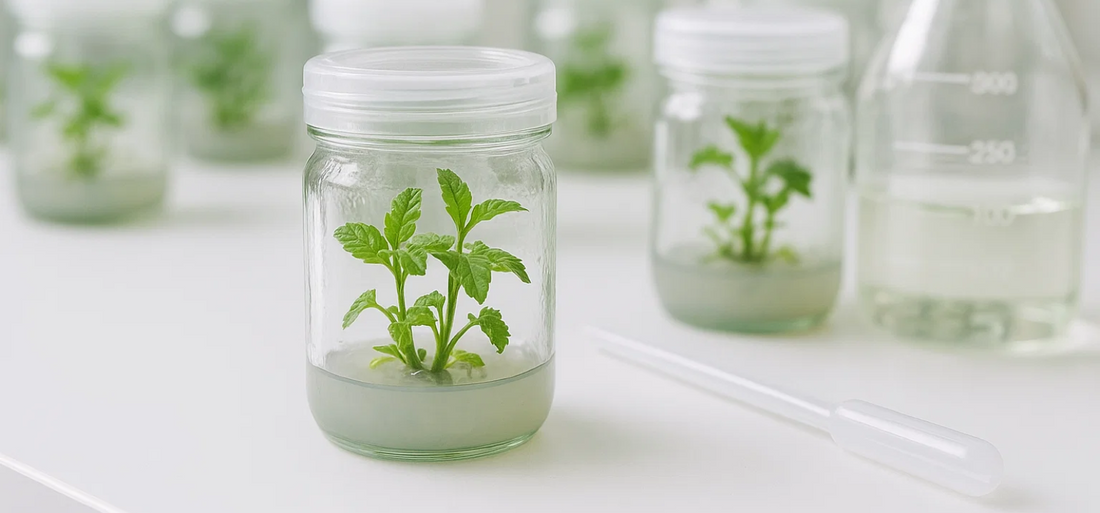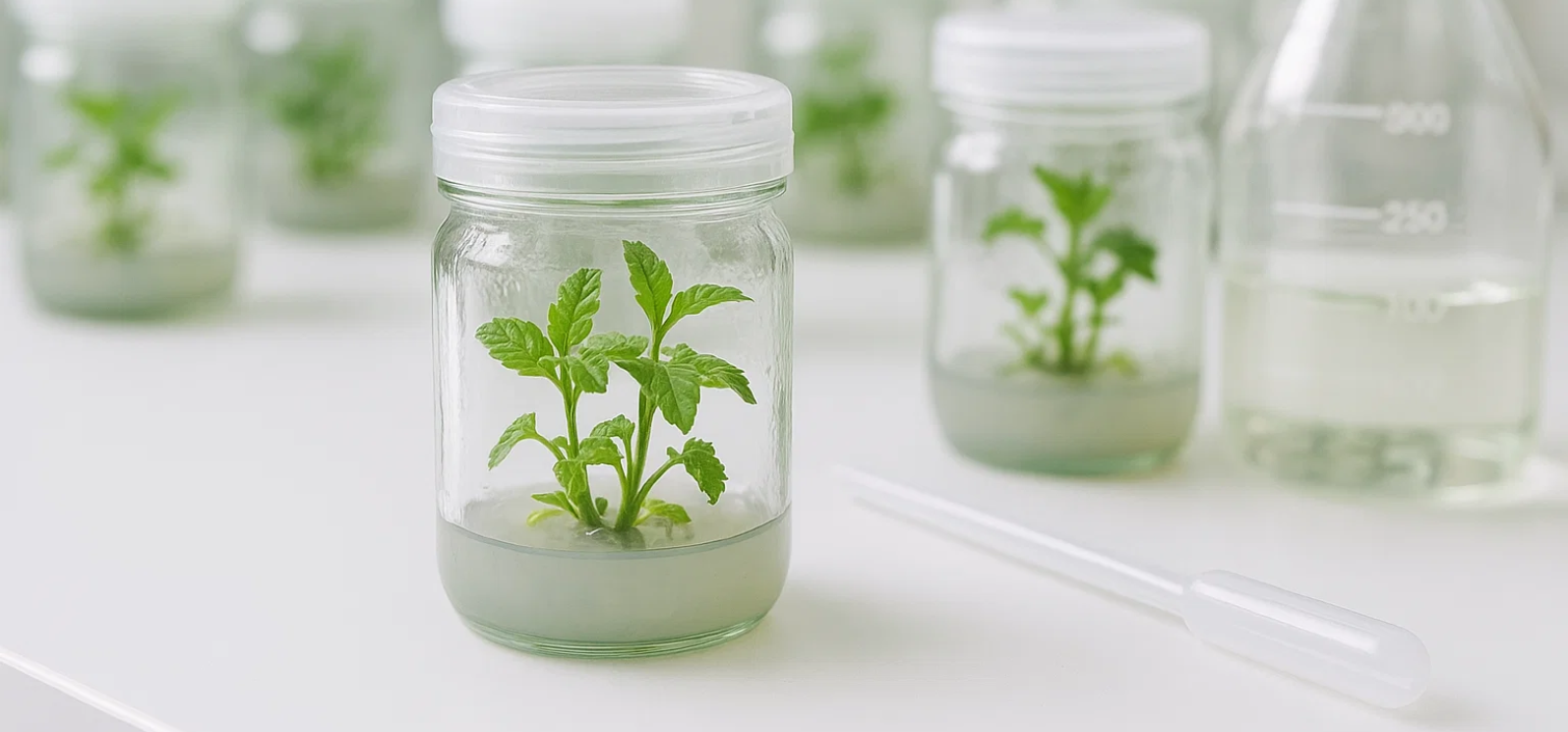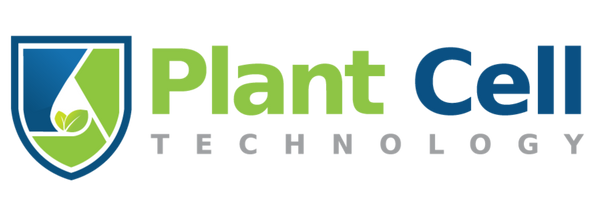
A Guide to Plant Growth: A Deep Dive into Tissue Culture Media
As a content and community manager, I leverage my expertise in plant biotechnology, passion for tissue culture, and writing skills to create compelling articles, simplifying intricate scientific concepts, and address your inquiries. As a dedicated science communicator, I strive to spark curiosity and foster a love for science in my audience.


Introduction
The ability to grow a complete plant from a small section of tissue is only possible through a scientific technique called plant tissue culture.
At the core of this process is the culture medium, a nutrient solution that provides all the essential compounds a developing plant requires to grow in a laboratory setting.
The composition of this medium is one of the most critical factors for success. An incorrect formulation can lead to poor growth, abnormal development, or failure of the culture.
A properly designed medium, however, utilizes the plant's natural regenerative capacity, enabling the production of millions of uniform, disease-free plants, the conservation of rare species, and the improvement of agricultural crops.
This article provides a detailed examination of plant tissue culture media. We will cover the essential components, the growth regulators that direct development, and the reasons why different formulations are required for different plants and objectives.
The Foundation: Principles of Tissue Culture

The practice of plant tissue culture is based on the biological principle of totipotency. This is the capacity of a single plant cell to grow and develop into a complete organism.
A cell from a plant's leaf, stem, or root contains the entire genetic blueprint necessary to regenerate all plant parts, including roots, shoots, leaves, and flowers.
To realize this potential in a lab, two conditions must be met:
-
A Sterile Environment: The nutrient media are rich in sugar and minerals, which also supports the growth of bacteria and fungi. Microbial contamination can outcompete and kill the plant tissue. Therefore, all materials, containers, and the medium itself must be sterilized, and all procedures must be conducted in a sterile environment, such as a laminar flow hood.
-
A Complete Artificial Diet: The medium functions as the plant's sole source of nutrition and support. It replaces the functions of soil, water, and air, and provides energy that the plantlet cannot yet produce through photosynthesis. It is the primary tool used to control plant development in vitro.
The Building Blocks: What's in a Culture Medium?

A culture medium is a complex aqueous solution, with each ingredient fulfilling a specific and essential role.
-
Macronutrients: These elements are required in large quantities (millimolar concentrations). They include Nitrogen (N), a component of proteins and nucleic acids; Phosphorus (P), essential for energy transfer (ATP); and Potassium (K), which activates enzymes and regulates osmotic potential. Calcium (Ca), Magnesium (Mg), and Sulfur (S) are also vital macronutrients. The specific forms and ratios of these nutrients, particularly nitrogen (supplied as nitrate and ammonium), significantly influence growth and are a key difference between media formulations.
-
Micronutrients: These are essential elements required in very small quantities (micromolar concentrations). The most critical is Iron (Fe), which is necessary for cellular respiration and chlorophyll synthesis. To maintain its solubility and availability at the medium's pH, iron is supplied in a "chelated" form, typically bound to EDTA. Other essential micronutrients like Manganese (Mn), Zinc (Zn), and Boron (B) function as cofactors for enzymatic reactions.
-
Carbon & Energy Source: As in vitro cultures have limited photosynthetic capability, they require an external energy source. This is typically sucrose, supplied at a 2-3% concentration, which provides the energy for cell division and growth.
-
Vitamins & Amino Acids: Plants require vitamins as cofactors for metabolic enzymes. Thiamine (Vitamin B1) is considered essential for all plant tissue cultures. Other vitamins like myo-inositol, nicotinic acid, and pyridoxine are also standard components. Amino acids, such as glycine, can be added to provide a readily assimilated source of reduced nitrogen, which can enhance growth.
Directing Development: The Power of Plant Hormones

While nutrients provide the materials for growth, Plant Growth Regulators (PGRs), or plant hormones, provide the developmental signals that instruct the cells on what to become.
By manipulating the types and concentrations of PGRs in the medium, it is possible to direct morphogenesis with high precision. The two most important classes are auxins and cytokinins.
The Auxin:Cytokinin Ratio is a primary determinant of organogenesis:
-
High Auxin, Low Cytokinin → Root Formation: This hormonal balance signals for the induction of roots (rhizogenesis). This formulation is used in the final rooting stage to produce a complete plantlet. Common auxins for this purpose include IBA and NAA. The potent auxin 2,4-D is highly effective for inducing callus but often inhibits organ formation.
-
Low Auxin, High Cytokinin → Shoot Formation: This ratio promotes the formation of shoots (caulogenesis). It is the basis of micropropagation, used to induce a high number of shoots from a single explant. BAP and Kinetin are the most frequently used cytokinins.
-
Balanced Auxin & Cytokinin → Callus Proliferation: When both hormones are present at intermediate or high concentrations, they stimulate rapid, undifferentiated cell division, leading to a mass of unorganized cells known as callus.
While the ratio is a guiding principle, the absolute concentration of each hormone and the specific sensitivity of the plant genotype are equally critical factors. Developing a protocol often requires empirical testing to find the optimal hormonal balance.
The Classical Recipes: MS, B5, and DKW Media

Several "classical" basal media formulations have been developed that serve as the foundation for most tissue culture protocols. They contain the same essential elements but differ in their concentrations and ionic balance, making them suitable for different plants and applications.
-
Murashige & Skoog (MS) Medium: Developed in 1962, MS is the most widely used medium in plant tissue culture. Its defining feature is a high concentration of inorganic salts, especially nitrogen. This nutrient-rich formula supports vigorous growth and makes it effective for a wide range of herbaceous species. However, its high salt content can be phytotoxic to sensitive plants.
-
Linsmaier & Skoog (LS) Medium: A Refinement of MS: Published in 1965, LS medium is a direct and significant modification of the MS formulation. Linsmaier and Skoog systematically investigated the organic supplements in the original MS medium to determine which were truly essential. They discovered that for their tobacco cultures, only two were required: thiamine (at an optimized, higher concentration of 0.4 mg/L) and myo-inositol. The LS medium therefore uses the identical powerful inorganic salt base as MS but with a more minimal and chemically defined organic package. Its significance lies in providing a research alternative that reduces the number of variables in an experiment, leading to more reproducible results without sacrificing the robust growth supported by the MS salts.
-
Gamborg's B5 Medium: Developed for soybean cell suspension cultures, B5 is a lower-salt medium with a significantly lower concentration of ammonium nitrogen compared to MS. This makes it suitable for plants sensitive to high salt levels, particularly legumes and many cereals. It is also a preferred medium for cell suspension and protoplast cultures.
-
Driver & Kuniyuki Walnut (DKW) Medium: Woody plants are often difficult to culture and respond poorly on MS medium. DKW was formulated specifically for these species. It has a distinct mineral profile with significantly higher levels of calcium, sulfate, and copper compared to MS, which meets the specific nutritional demands of many woody plants. It is a standard medium for walnut, cherry, pear, and has also proven effective for Cannabis.
-
Hoagland Solution: The Foundation of Mineral Nutrition: While the Hoagland solution is a benchmark in plant science, its role in tissue culture is foundational rather than direct. It was developed for hydroponics—growing whole, photosynthetically active plants without soil—and contains a complete profile of mineral nutrients. However, it critically lacks the sucrose (carbon source), vitamins, and growth hormones required to sustain undifferentiated cells in vitro. Its significance to tissue culture is profound but indirect: the research that established the Hoagland solution helped define the baseline mineral requirements for healthy plant growth. This provided the foundational knowledge of mineral nutrition upon which later, true tissue culture media like MS were built.
One Size Doesn't Fit All: Species-Specific Media

While classical media serve as excellent starting points, some plants have unique physiological requirements that necessitate highly specialized recipes. Orchids and bananas are two prominent examples.
The Orchid Challenge: Low Salts and Complex Additives
Many orchids are epiphytes, adapted to a low-nutrient environment. Culturing them on a high-salt medium like MS can cause osmotic stress and tissue damage.
Therefore, orchid media (e.g., Knudson C) are formulated with very low salt concentrations. They are also frequently supplemented with complex, undefined additives that provide a rich mixture of growth factors. These include:
-
Banana Powder & Coconut Water: These provide a natural source of hormones, vitamins, and carbohydrates.
-
Activated Charcoal: This is added to adsorb phenolic compounds and other metabolic byproducts released by the plant tissue that can inhibit growth. It also darkens the medium, which can promote root development.
The Banana Solution: High-Powered Propagation
Banana is a globally important food crop, and tissue culture is the primary method for producing large quantities of disease-free plants. As a large, fast-growing herbaceous plant, banana has high nutrient requirements and grows well on MS medium.
The objective for banana is rapid multiplication. This is achieved by using a standard MS base supplemented with a high concentration of a cytokinin (typically BAP). This hormonal signal induces the formation of a large cluster of shoots. These shoots are then separated and transferred to a different medium, where the cytokinin is removed and an auxin is added to induce rooting.
A Multi-Stage Process: Different Media for Different Goals
A complete tissue culture protocol often involves guiding the plant through different developmental stages using a sequence of media with distinct compositions.
-
Multiplication vs. Rooting: In micropropagation, the multiplication stage uses a high-cytokinin medium to maximize shoot production. This is followed by a rooting stage, where shoots are transferred to a high-auxin, often lower-salt, medium to induce root formation and create a complete plantlet.
-
Solid vs. Liquid Media: The physical state of the medium is also a strategic variable. Solid media, solidified with a gelling agent like agar, provide physical support and are most common. Liquid media can result in faster growth due to better nutrient access but increase the risk of physiological disorders like hyperhydricity, where tissues become water-logged and malformed.
Troubleshooting and Finding the Right Formula

Selecting the appropriate medium formulation is a systematic process.
-
Consider the Plant: The plant's natural biology is the first consideration. Herbaceous species often do well on MS, woody plants on DKW, and legumes on B5.
-
Define Your Goal: The objective determines the hormonal strategy. Callus induction requires high auxin, shoot multiplication requires high cytokinin, and rooting requires high auxin with no cytokinin.
-
Do Your Homework: A thorough literature search for established protocols on your specific species is a critical step.
-
Experiment: The initial protocol should be treated as a starting point. Systematic testing of variables like hormone concentrations and basal salt strength is usually required to optimize the formula for a specific plant genotype.
Common issues like tissue browning (from phenolic compounds) or hyperhydricity can often be resolved by modifying the medium, such as by adding antioxidants, increasing the agar concentration, or reducing the cytokinin level.
Take the Guesswork Out of Your Lab Work
Understanding the science behind plant tissue culture media is essential, but preparing them from individual chemical stocks can be complex and time-consuming.
Plant Cell Technology provides researchers, educators, and commercial labs with high-quality, pre-mixed media and supplements to streamline workflows and ensure reproducible results.
-
Pre-Mixed Basal Media: We offer accurately formulated MS, DKW, LS, and Hoagland media. Just add water, adjust the pH, and sterilize.
-
Plant Growth Regulators: We provide a complete selection of high-purity auxins (IBA, NAA), cytokinins (BAP, Kinetin, TDZ), and other PGRs for all your developmental needs.
-
Gelling Agents & Supplements: From high-clarity agar and gellan gum to essential supplements like activated charcoal and antioxidants, we have all the components needed to optimize your protocols.
Focus on your research, not on media preparation. Let Plant Cell Technology be your partner for your tissue culture needs.
Visit Plant Cell Technology Store Today to Explore Our Products and Services!
Blog Categories
View by Level
Popular Blogs

A Guide to Plant Growth: A Deep Dive into Tissue Culture Media
Introduction The ability to grow a complete plant from a small section of tissue is only possible through a scientific...
Read More
Activated Charcoal in Tissue Culture: When to Use It and Why It Matters
Introduction Success in plant tissue culture often hinges on the precise composition of the growth medium. Scientists and cultivators meticulously...
Read MoreSubscribe to Our Newsletter








Join the conversation
Your email address will not be published. Required fields are marked